You’re smart, but starting a small business doesn’t make you a finance expert. Accounting 101 is crucial because of the time and money it can save you in the future.
It doesn’t matter if you love crunching numbers or consider yourself the more creative type. Entrepreneurs have to be aware of the financial health of their businesses.
We wrote this guide to ease you into the world of business accounting. By the end, you’ll feel ready to tackle your own business’s accounting (or find someone who can help).
Keep reading or use the chapter links below to jump to the section you’re looking for.
Accounting is a necessary part of running a business. It’s a task you’ll either need to grasp or outsource — or both. Let’s ease into the topic with Accounting 101.
Accounting 101
Accounting is something that most people have heard about at work, on TV, or online. But that doesn’t mean you really get the basics of accounting.
Like many careers, accounting is a mix of tactical and analytical tasks. And it’s not just recording transactions or doing taxes. Accounting is thinking about what your financial records will mean to regulators, agencies, and tax collectors.
If you’re in charge of accounting, it’s not just numbers and receipts. It’s a process of gathering and reporting financial information. You’ll use those reports to communicate the cash flows, financial position, and performance of your business.
Understanding accounting often begins with learning basic terms and principles. These can help you learn the foundation of accounting. Then, it’s about learning how you can apply these practices.
But before we dig into those ideas, let’s talk about what day-to-day work looks like for an accountant.
What do accountants do every day?
Accountants oversee the financial records for a business and make sure the data is correct. Then, they use this data to create budgets, financial documents, and reports.
Examples of this might include a cash flow statement for operations or an income statement for an upcoming board meeting.
They also attend meetings to offer advice or look into legal issues. Other common activities include:
- Collecting new financial data
- Reviewing or updating past records
- Collecting evidence for audits and other legal proceedings
- Computing taxes
- Checking on compliance with relevant laws
- Making sure tax payments are on time
- Forecasting and risk-assessment
Accounting Skills
Accountants can’t just be good with numbers. There are many other technical and soft skills that this role uses on a daily basis to make sure a business is financially healthy.
Important skills include:
- Listening
- Time management
- Organization
- Critical thinking
These help accountants gather information from stakeholders and communicate their findings. Knowledge of how the business works is also essential to contextualize financial data.
While math skills are helpful, data and systems analysis are keys to success in this role. An accountant often plays the role of investigator. This means that curiosity and deductive reasoning skills are also useful.
If you don’t feel like these skills are your strongest areas and you run a business, you may want to seek out help to manage your accounting.
Accounting vs. Bookkeeping
These two might sound the same if you’re new to business finance, but they’re very different.
To keep it simple, bookkeeping is a tactical role, while accounting is more strategic.
Bookkeepers record and organize financial data for a business.
Accountants analyze and advise business leaders about what to do with that data. They offer insights on taxes, legal concerns, and growth. They prepare reports and audits to communicate and present financial data. These insights help businesses prepare for unexpected shifts that happen as a business grows.
So, an accountant can be a bookkeeper, but not all bookkeepers are accountants.
Basic Accounting For Your Business: What You Need to Know
Many small business owners do a combination of bookkeeping and accounting.
If you run a business on your own, you may do some or all of the following tasks:
- Opening a bank account
- Tracking income, expenses, assets, liabilities, and equity
- Preparing financial statements
- Developing a system for bookkeeping
- Creating a payroll system
- Figuring out tax regulations and payments
Sometimes a business will do this research and work as part of an initial business plan. Other times they learn about these requirements a little bit at a time as the business grows.
Accounting Automation
According to Statista, 64% of small businesses use accounting software for their finances. Another 43% use software for their taxes. Automated accounting software includes tools like QuickBooks, Xero, and other popular accounting applications.
These tools are how most small businesses manage their accounting. Automation tools save businesses and accountants time by limiting the amount of time they spend on data entry. This gives them more time to analyze data to improve the business.
Most accounting software is so quick and simple to use that it can be tempting to skip learning accounting terms and principles. But this know-how makes it easier to understand a complex audit or to find errors in automated data.
Accounting Basics
Regardless of how you manage your business accounting, it’s wise to understand accounting basics. If you can read and prepare these basic documents, you’ll understand your business’s performance and financial health — as a result, you’ll have greater control of your company and financial decisions.
Here are the documents and calculations we recommend picking up, even if you work with a professional, consulting agency, or have hired a certified public accountant (CPA). They provide valuable snapshots and measures of your business performance.
1. Income Statement
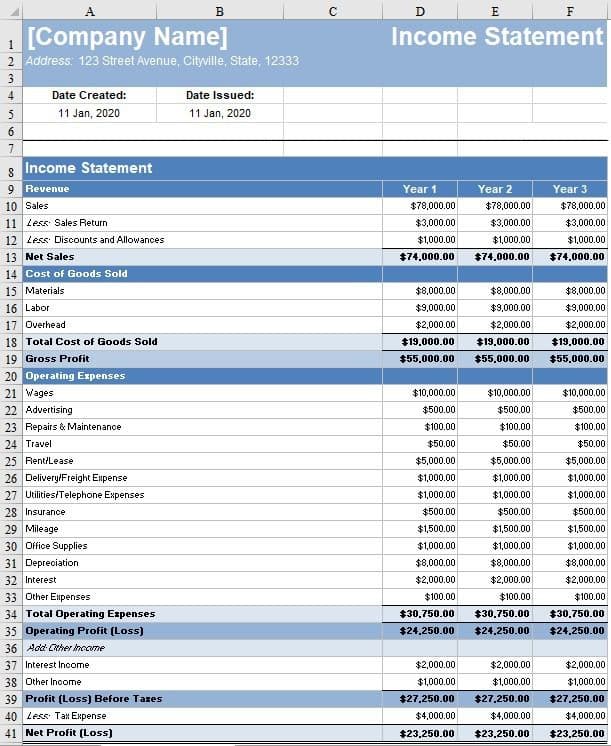
Image Source
An income statement shows your company’s profitability and tells you how much money your business has made or lost
2. Balance Sheet
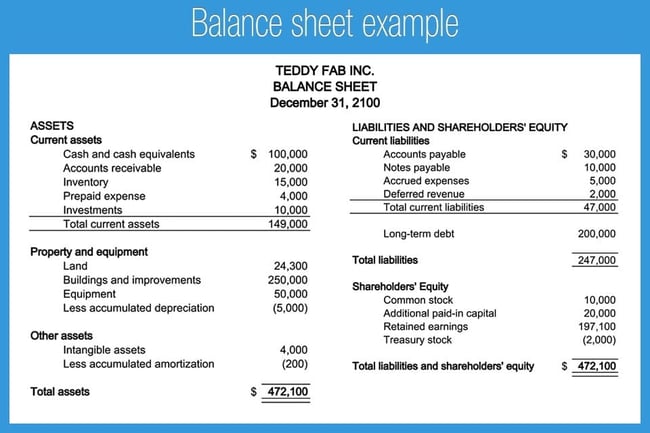
Image Source
A balance sheet is a snapshot of your business’s financial standing at a single point in time. A balance sheet will also show you your business’s retained earnings, which is the amount of profit that you’ve reinvested in your business (rather than being distributed to shareholders).
3. Profit and Loss (P&L) Statement
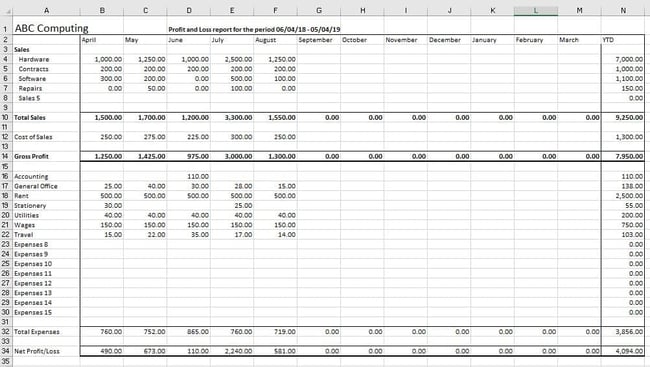
Image Source
A profit and loss (P&L) statement is a snapshot of your business’s income and expenses during a given time period (like quarterly, monthly, or yearly). This calculation will also be reflected on your business’s Schedule C tax document.
4. Cash Flow Statement
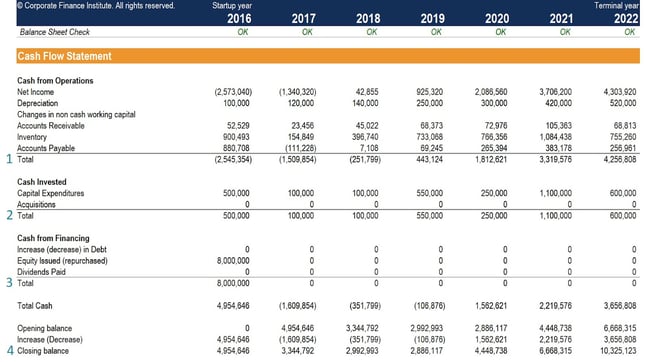
Image Source
A cash flow statement analyzes your business’s operating, financing, and investing activities to show how and where you’re receiving and spending money.
5. Bank Reconciliation

Image Source
A bank reconciliation compares your cash expenditures with your overall bank statements and helps keep your business records consistent. (This is the process of reconciling your book balance to your bank balance of cash.)
Basic Accounting Terms
These 15 terms will create the foundation on which you’ll build your knowledge of business accounting. While some of these terms might not apply to your business right now, it’s important to develop a holistic understanding of the subject in case you expand or move into another type of business.
1. Debits & Credits
Not to be confused with your personal debit and credit cards, debits and credits are foundational accounting terms to know.
A debit is a record of all money expected to come into an account. A credit is a record of all money expected to come out of an account. Essentially, debits and credits track where the money in your business is coming from, and where it’s going.
Many businesses operate out of a cash account – or a business bank account that holds liquid assets for the business. When a company pays for an expense out of pocket, the cash account is credited, because money is moving from the account to cover the expense. This means the expense is debited because the funds credited from the cash account are covering the cost of that expense.
Here’s a simple visual to help you understand the difference between debits and credits:
| debits | Credits |
| Increase assets | Decrease assets |
| Decrease liabilities | Increase liabilities |
| Decrease revenue | Increase revenue |
| Increase the balance of expense accounts | Decrease the balance of expense accounts |
| Decrease the balance of equity accounts | Increase the balance of equity accounts |
2. Accounts Receivable & Accounts Payable
Accounts receivable is money that people owe you for goods and services. It’s considered an asset on your balance sheet. For example, if a customer fulfills their invoice your company’s accounts receivable amount is reduced because less money is now owed.
Accounts payable is money that you owe other people and is considered a liability on your balance sheet. For example, let’s say your company pays $5,000 in rent each month. Here’s how that would be recorded in your financial records before that amount is paid out.
| date | account | debit | credit |
| 7/31/21 | Rent | 5000 | |
| 7/31/21 | Accounts Payable | 5000 |
Once that value is paid, here’s how that would be recorded in your company’s financial records:
| date | account | debit | credit |
| 8/1/21 | Accounts Payable | 5000 | |
| 8/1/21 | Cash Account | 5000 |
3. Accruals
Accruals are credits and debts that you’ve recorded but not yet fulfilled. These could be sales you’ve completed but not yet collected payment on or expenses you’ve made but not yet paid for.
(Why not wait to record the activity until the payment is complete? We’ll answer this question when we explain the accrual accounting method later.)
4. Assets
Assets are everything that your company owns — tangible and intangible. Your assets could include cash, tools, property, copyrights, patents, and trademarks.
5. Burn Rate
Your burn rate is how quickly your business spends money. It’s a critical component when calculating and managing your cash flow.
To calculate your burn rate, simply pick a time period (such as a quarter or a year). Subtract your on-hand cash amount at the end of that period from your on-hand cash at the beginning, then divide that number by the number of months in the period (or by your chosen cadence).
6. Capital
Capital refers to the money you have to invest or spend on growing your business. Commonly referred to as “working capital,” capital refers to funds that can be accessed (like cash in the bank) and don’t include assets or liabilities.
7. Cost of Goods Sold
The cost of goods sold (COGS) or cost of sales (COS) is the cost of producing your product or delivering your service.
COGS or COS is the first expense you’ll see on your profit and loss (P&L) statement and is a critical component when calculating your business’s gross margin. Reducing your COGS can help you increase profit without increasing sales.
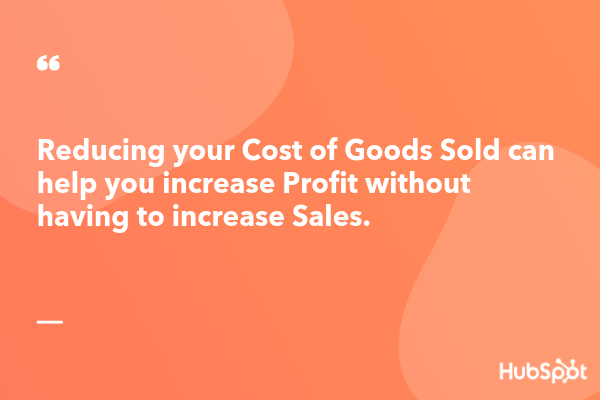
8. Depreciation
Depreciation refers to the decrease in your assets’ values over time. It’s important for tax purposes, as larger assets that impact your business’s ability to make money can be written off based on their depreciation. (We’ll discuss expenses and tax write-offs later on.)
9. Equity
Equity refers to the amount of money invested in a business by its owners. It’s also known as “owner’s equity” and can include things of non-monetary value such as time, energy, and other resources. (Ever heard of “sweat equity”?)
Equity can also be defined as the difference between your business’s assets (what you own) and liabilities (what you owe).
A business with healthy (positive) equity is attractive to potential investors, lenders, and buyers. Investors and analysts also look at your business’s EBITDA, which stands for earnings before interest, taxes, depreciation, and amortization.

10. Expenses
Expenses include any purchases you make or money you spend in an effort to generate revenue. Expenses are also referred to as “the cost of doing business”.
There are four main types of expenses, although some expenses fall into more than one category.
- Fixed expenses are consistent expenses, like rent or salaries. These expenses aren’t typically affected by company sales or market trends.
- Variable expenses fluctuate with company performance and production, like utilities and raw materials.
- Accrued expenses are single expenses that have been recorded or reported but not yet paid. (These would fall under accounts payable, as we discussed above.)
- Operating expenses are necessary for a company to do business and generate revenue, like rent, utilities, payroll, and utilities.
11. Fiscal Year
A fiscal year is the time period a company uses for accounting. The start and end dates of your fiscal year are determined by your company; some coincide with the calendar year, while others vary based on when accountants can prepare financial statements.
12. Liabilities
Liabilities are everything that your company owes in the long or short term. Your liabilities could include a credit card balance, payroll, taxes, or a loan.
13. Profit
In accounting terms, profit — or the “bottom line” — is the difference between your income, COGS, and expenses (including operating, interest, and depreciation expenses).
You (or your business) are taxed on your net profit, so it’s important to proactively plan for your tax liability. Do this by staying on top of your net profit amount, setting aside some of your revenue in a separate savings account, or paying your estimated taxes every quarter (like employer withholding).
14. Revenue
Your revenue is the total amount of money you collect in exchange for your goods or services before any expenses are taken out.
15. Gross Margin
Your gross margin (or gross income), which is your total sales minus your COGS — this number indicates your business’s sustainability.
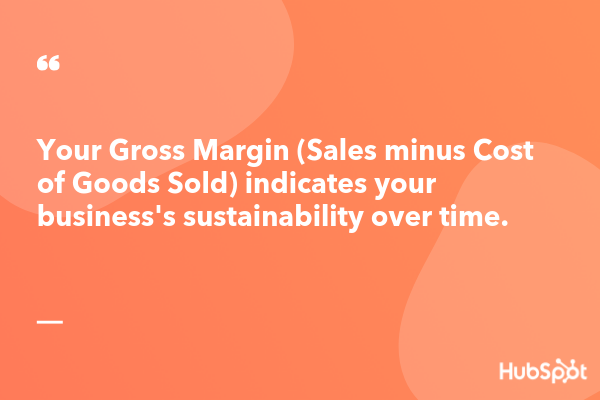
Again, these terms are merely an introduction to business accounting. However, they will help you better understand accounting principles — which we review next.
Accounting Principles
Accounting standards help make sure that investors aren’t influenced by inaccurate financial statements. Accounting principles confirm that publicly-traded companies share their finances accurately and consistently.
The Generally Accepted Accounting Principles (GAAP) are a blueprint for accounting across sectors and industries in the U.S. The Financial Accounting Standards Board (FASB) established the GAAP to uphold quality standards for accounting activities.
By law, accountants representing all publicly traded companies must comply with GAAP. Let’s break down these principles.
1. Principle of Regularity
The working accountant is compliant with GAAP rules and regulations.
Why this accounting principle is important:
This principle regulates how accounting works as a profession. Without it, every company would manage finances in its own way. This would make it tough to keep business dealings fair.
How to apply this principle:
Follow all Financial Accounting Standards Board (FASB) regulations.
2. Principle of Consistency
This principle states that the accountant has reported all information consistently throughout the reporting process. Under the principle of consistency, accountants must clearly state any changes in financial data on financial statements.
Why this accounting principle is important:
It makes sure that you can compare financial reporting across a company. Say you’re comparing two departments, but they record the same transactions in different ways. This would make it difficult for stakeholders to compare them.
How to apply this principle:
Create clear processes for recording transactions and events as soon as you start your business. Once you have a set process for documenting and reporting your finances, stick to it.
3. Principle of Sincerity
The accountant provides an accurate financial picture of the company.
Why this accounting principle is important:
This is a promise from the accountant that they’re not trying to mislead anyone. This helps investors trust that the information your business presents is accurate.
It’s also a commitment to presenting data in the fairest and most accurate way possible.
How to apply this principle:
Maintain your financial records honestly and accurately.
4. Principle of Permanence of Methods
All financial reporting methods should be consistent across time periods.
Why this accounting principle is important:
This is another principle of regularity and consistency. It makes it easier to compare financial records.
How to apply this principle:
Clearly organize your daily bookkeeping operations. It’s also a good idea to create processes so that your reporting stays consistent over time.
5. Principle of Non-Compensation
All financial information, both negative and positive, is disclosed accurately. The proper reporting of financial data should be conducted with no expectation of performance compensation.
Why this accounting principle is important:
It says that accountants shouldn’t alter reporting. Instead, accountants must commit to reporting both good and bad performance.
This sounds straightforward, but accounting can impact both internal and external opinions. Because of this, many publicly-traded companies report both GAAP and non-GAAP income. Sometimes this extra data can help the public image of a company or clarify the value of a company’s investments.
How to apply this principle:
Create financial reports that are clear and accurate.
6. Principle of Prudence.
Financial data should be presented based on factual information, not speculation.
Why this accounting principle is important:
It makes sure that financial statements are a realistic overview of revenues and liabilities. It reminds companies not to over or understate their financial risk.
How to apply this principle:
Business moves fast, and many companies rely on in-progress projects and income to meet goals. But even if this applies to your business, continue to maintain accurate and timely records.
In general, don’t expect profits, but prepare for any possible losses.
7. Principle of Continuity
This principle states the assumption that the company will continue operations.
Why this accounting principle is important:
This is another principle that’s about trust. It says to base your accounting on how the business runs now, not how you hope it will run in the future. Even if a company plans to make big changes in the future, that shouldn’t change its value today.
How to apply this principle:
As your business plans for and makes changes, maintain a consistent process for financial reporting and record-keeping.
8. Principle of Periodicity
All accounting entries should be reported during relevant time periods.
Why this accounting principle is important:
This is another guide for your reporting timeline. It makes it easier for stakeholders to understand and compare performance because it separates it into short periods of time. It also makes it easier for them to see what the most current financial information is.
How to apply this principle:
Report on your finances annually, quarterly, and monthly. It’s also a good idea to set your fiscal year when you start your business.
9. Principle of Materiality
Accountants should aim to provide full disclosure of all financial and accounting data in financial reports.
Why this accounting principle is important:
Your business can decide which transactions are “material” and which are not. Enterprise companies will approach what is and is not “material” differently than a small business would. If something isn’t “material” it’s something the business feels is too small to mention.
If you limit your accounting to material transactions you can save time for your business. At the same time, you want to make sure that financial information that’s important to stakeholders is easy to access and review. This concept comes up most often during an audit.
How to apply this principle:
You might start your business accounting recording every transaction. But as your business grows or circumstances change, you may want to revisit the way you record and report small transactions.
10. Principle of Utmost Good Faith
According to this principle, parties should remain honest in all transactions.
Why this accounting principle is important:
This principle establishes trust. It reinforces that you will share important information with stakeholders before you enter into a contract together. This gives each person a full and clear picture of your business before they make an agreement.
How to apply this principle:
Be transparent and share essential details as you make agreements.
Accounting is a complex discipline. But if you’re not an accountant yourself, you don’t need to know everything about accounting — only the practices and parts that have to do with your financial operations, legal obligations, and business decisions.
Whether you’ve just launched your business or are a startup veteran, the following section is important. These eight steps will introduce you to the accounting process (if you’re not yet familiar) and set you up to scale your business in a sustainable way.
Note: This is simply an overview of the discipline of accounting. We recommend conducting more research and potentially hiring a professional accountant (which we’ll talk about below) to ensure you don’t miss any financial or legal obligations.
1. Open a business bank account linked to all points of sale.
For your first order of business, decide where to keep your money. This may vary based on your business’s legal structure. If your business is an LLC, Partnership, or Corporation, you are required to have a separate business bank account. If you’re a Sole Proprietorship, you don’t have to — but we still recommend it.
Having a separate bank account for your business income and expenses will make your accounting easier. You’ll only have one account to monitor for bookkeeping and tax purposes, and your personal income and expenses won’t get entangled with your business ones. Believe me — only having to look at one set of bank statements is a lifesaver during tax season.
Look for a bank that has a local branch as well as robust online banking. Also, be sure the bank can integrate with your point-of-sale (POS) system and other technological needs. Business bank accounts typically charge more than personal accounts and often have a higher minimum balance. Check these numbers before committing to a bank and a business account.
We recommend opening two accounts — one checking account and one savings account, the latter in which you’ll stash money for taxes and unforeseen expenses. And remember, before you can open any business accounts, you must have a registered business name.
Finally, consider opening a business credit card. Not only will this help offset some upfront expenses, but it will also contribute to your business’s overall credit. Also, Corporations and LLCs are required to have a separate line of credit outside their personal accounts.
2. Itemize all expenses by department.
Raise your hand if you’ve heard anyone say, “Hey, I can write that off.” I heard my parents say that a lot when I was younger — they’re both entrepreneurs — and I had no idea what it meant.
It wasn’t until I started my own venture in college that I came to understand tax deductions: they are a wonderful yet pesky benefit of owning a business.
Many business expenses are tax deductions — expenses that deduct from what you owe in taxes. For example, if I spent $500 to fly to and attend a marketing conference, that’s $500 less I owe in taxes for that year. The catch? In order to claim a deduction, you need to keep a record of that expense.
Historically, keeping, filing, and reviewing paper receipts was a time-consuming task. (My mom used to pay 10-year-old me to organize receipts by date and highlight the vendor and total amount … now I understand why.)
Today’s entrepreneurs have it much easier. Software, apps, and cloud-based bookkeepers have made it a breeze to track expenses and not have to keep hundreds of receipts lying around. Check out solutions like Rydoo, Expensify, Zoho Expense, and Shoeboxed to help manage your expenses.
Now, let’s discuss the expenses and supporting documentation you’ll be managing. While we can’t cover every possible deduction, here are a handful you should definitely keep a record of. (Why? Because they’re easy to mix up with personal expenses … and the IRS knows it.)
- Advertising and marketing expenses, such as paid social media ads, website hosting fees, and business cards
- Business travel, such as plane tickets, hotels, and rental cars
- Home office expenses, such as WiFi, equipment, and mobile phones
- Vehicle-related expenses, such as mileage and gas
- Meals and entertainment, such as trips to coffee shops, cafes, or concerts (unless you don’t attend these events … then they’d be considered Gifts)
In case you need to support these expenses, we recommend that you keep the following documents. (Rule of thumb: When in doubt, keep everything.)
- Receipts (paper and digital)
- Bank and card statements
- Bills (for utilities, phone, internet, etc.)
- Canceled checks
- Invoices and documents showing proof of payment
- Financial statements from your bookkeeper or bookkeeping software
- Tax returns from previous years
- Any W-2, W-4, W-9, and 1099-MISC forms
Another common way to manage your expenses is by separating operating expenses from selling, general, and administrative (SG&A) expenses.
Operating and SG&A Expenses
Some companies decide to combine operating (OPEX) and SG&A expenses while some separate them (they can be combined on an income statement). Either option is totally fine — it’s about preference.
Here’s what you need to know about OPEX versus SG&A expenses:
- Operating expenses include costs related to your daily expenses and are often the majority of a business’s expenses (which is why many companies choose to combine these expenses).
- OPEX aren’t included in COGS — they’re the costs involved in the production of goods and services such as rent, utilities, insurance, inventory costs, salaries or wages, property taxes, or business travel.
- SG&A expenses are incurred as daily business ops and are included in income statements (under “expenses”).
- SG&A expenses aren’t included in COGS (since they’re not associated with a specific product) and aren’t assigned to your manufacturing costs.
- If separated from OPEX, SG&A covers factors like accounting and legal expenses, ads and promotional materials, marketing and sales expenses, utilities and supplies that aren’t related to manufacturing, and corporate overhead (if there are executive assistants and corporate officers).
3. Adhere to all income, employment, and excise taxes.
Ah. If only bookkeeping meant hoarding the paperbacks I overbuy from my local bookstore — I’d be really good at that.
Unfortunately, bookkeeping isn’t always as fun. It’s another important account term that refers to the day-to-day recording, categorizing, and reconciling of transactions. Basically, bookkeeping keeps you from spending and making money without tracking it.
Bookkeeping is an ongoing task. Technically, you should be doing it every day, but we all know life can get in the way. Ideally, you should complete your bookkeeping every month so you can keep a thumb on the pulse of your income, expenses, and overall business performance.
Before we dive into how to do your bookkeeping, let’s cover the two main bookkeeping methods.
Cash Method
The cash method recognizes revenue and expenses on the day they’re actually received or paid. This method is the simplest for small businesses because it doesn’t require you to track payables or receivables and reflects whether or not your money is actually in your account.
Accrual Method
The accrual method recognizes revenue and expenses on the day the transaction takes place, regardless of whether or not it’s been received or paid. This method is more commonly used as it more accurately depicts the performance of a business over time.
The only thing it doesn’t show is cash flow — a business can look profitable but have zero dollars in the bank. If a business’s annual revenue exceeds $5 million, it’s required to use the accrual method.
Now, let’s talk about how you can do your bookkeeping.
- You could keep your own books with a spreadsheet (like Excel or Google Sheets). This method is best for individuals or small businesses with low budgets. Download a bookkeeping template if you need help structuring your data.
- You could outsource your bookkeeping to a freelance bookkeeper or bookkeeping service.
- You could hire a full-time bookkeeper — if your budget and bandwidth allow.
- You could use bookkeeping and accounting software like Bench, Manager.io, Quickbooks, Freshbooks, or Xero. (Don’t worry — there are plenty of free accounting software options, too.)
4. Set up a payroll system.
Do you plan on hiring employees or contractors? Perhaps you’re managing on your own for now but are considering expanding in the future. Regardless, you’ll need to understand and secure a payroll system.
Payroll is another tedious yet required part of accounting. Thankfully, there’s plenty of software that can help you. (Hallelujah for modern-day technology, right? 🙌🏼) Check out solutions like Gusto, Zenefits, and Intuit Quickbooks Payroll.
Employees and independent contractors are classified differently and give your business different tax deductions. Here’s how to handle both.
Payroll For Employees
You can deduct employee wages (salaries and commission bonuses), employee education expenses, and employee benefits (accident and health plans, adoption assistance, life insurance, and more) from your taxes.
You can also deduct payroll taxes, which are employment taxes paid on behalf of your employees (like Social Security and Medicare as well as federal and state unemployment taxes).
Employees should submit a W-4 form so you know how much tax to withhold. In exchange, you should provide employees with a W-2 form, which summarizes their yearly gross pay. They use this to pay personal taxes.
Payroll For Independent Contractors
Independent contractors include freelancers, consultants, and other outsourced experts that aren’t formally employed by your business. With contractors, you don’t pay benefits or withhold taxes on their behalf.
Because of that, contractors should submit a W-9 form so you have their business information (such as their SSN or EIN), and you should provide a 1099-MISC form in exchange (if you pay them more than $600 per year).
A 1099 form tells the government how much you spent for their services — so you can write this amount on your tax return, and so they can assume the tax burden on their return.
5. Identify the right payment gateway for your needs.
We’ve talked about your method of paying employees and contractors. Now, let’s talk about how you’ll receive money for your goods and services. (This sounds like more fun, huh?)
Your method of collecting money is often referred to as your payment gateway. Whether you provide freelance services, set up shop at a local farmer’s market, or run a global e-commerce business, you need an easy (and legal) way to collect what you’ve earned.
Depending on the nature of your business, how you collect money will vary. Let’s go over some options.
Payment Gateway For Service Provider
As a freelance writer, I rarely work with clients in person. In fact, I’ve only ever officially met one of my clients — the rest I work with purely over email. Because of that, I collect most of my payments through an online gateway.
PayPal is a popular choice for collecting payments. You can also use software like Wave, Xero, or Bench. Not only can you invoice clients through these programs, but you can also conduct bookkeeping, payroll, and other accounting tasks. These charge fees, though, so consider that when making your decision.
Another way to collect payment is through mobile applications like Venmo or Square Cash — just be sure to send an invoice as proof of payment. Lastly, you can always collect payment via check — it just takes a bit longer than an online transfer. (Send an invoice with this method, too.)
Payment Gateway For Storefront Business
Collecting money in person (at a storefront, marketplace, etc.) can get pricey. Between equipment, credit card fees, and handling physical cash, it can be a hassle. Thankfully, Square and PayPal make it easy to accept card payments using your smartphone or tablet. These programs also send your customers’ receipts, reconcile your transactions, and handle returns if necessary.
If you expect a high influx of daily purchases, we recommend choosing a more robust POS system and more reliable equipment (like a register and dedicated card reader).
Both Square and PayPal offer this option, too. With this option, you’ll need to set up a merchant account with your bank. (This account acts as a middle ground between your POS system and main bank account.)
Payment Gateway For Ecommerce Business
Ecommerce platforms like Shopify, BigCommerce, and WooCommerce often provide built-in payment gateways. These are always the easiest to adopt as they’re already integrated with your website. You could also use third-party payment solutions like Stripe.
6. Understand the tax obligations for your type of business.
Taxes are inescapable. Thankfully, they’re easy to prepare for. The best way to do so is to educate yourself on your business’s tax obligations, keep accurate records, and set aside revenue (or pay ahead in quarterly taxes).
Paying taxes as a small business is slightly more complicated than it is as an individual. The amount and type of taxes you file will depend on a few things: your business’s legal structure, if you have employees (and how many), and if you collect sales tax.
This part of accounting — tax obligation and collection — is particularly tedious. We highly recommend that you work with a professional to at least ensure your business is following the proper procedures and laws.
7. Regularly review and evaluate your methods.
Similar to other processes and strategies across your business, you’ll want to constantly review and evaluate your accounting methods. You should always have a controlled process in place for your business accounting — because, as you’ve learned throughout the above sections, it’s an absolutely critical aspect of your company’s overall health.
The frequency in which you review and evaluate your methods is bound to be unique to your specific business. However, it’s normal (and recommended) to audit your process at the end of every month, quarter, and year. This way, nothing slips through the cracks or becomes a problem that’s too large to bounce back from.
If the nature of your business is seasonal, you can tailor different factors like the frequency of your evaluation to this cycle. For instance, you might require more reviews of your accounting process during high season, and fewer during slower months.
8. Consider a professional service or CPA.
As important as it is to understand how business accounting works, you don’t have to do it alone. That’s where professional accounting services and CPAs come in.
If your budget allows, we highly recommend hiring a professional to help with your accounting. Here’s how you can go about doing so.
- Ask for a referral from a trusted friend or another entrepreneur. If you’re part of any business groups or networks, ask for recommendations there, too.
- Use the CPA directory.
- Use Yelp for local professionals.
Whomever you choose, be sure to read plenty of reviews and testimonials about your potential accountant. Inquire about his or her experience in your industry, rates, and services, and make sure you’re comfortable with how and how often you’ll communicate with your accountant before you sign anything. Set all expectations upfront.
Also, if you have the funds, hiring an in-house accountant is always an option. This person would be responsible for your business’s accounting only and be a contractor or full-time employee.
Learn Business Accounting to Grow Better
Business accounting might seem like a daunting mountain to climb, but it’s a journey well worth it. Accounting helps you see the entire picture of your company and can influence important business and financial decisions.
From practicing calculations to understanding your company’s tax obligations, learning the discipline of accounting can only help your business grow better.
Even if you opt to use accounting software or hire a professional, use the tips we’ve reviewed in this guide to understand accounting basics. Your business will thank you.
Editor’s note: This post was originally published in May 2019 and has been updated for comprehensiveness.
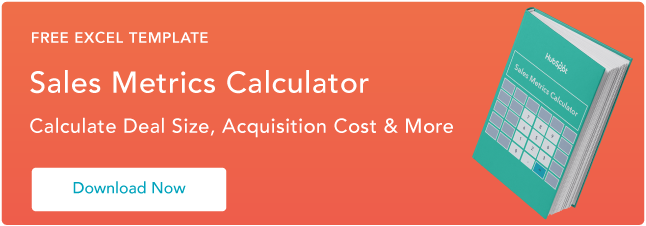
![]()



